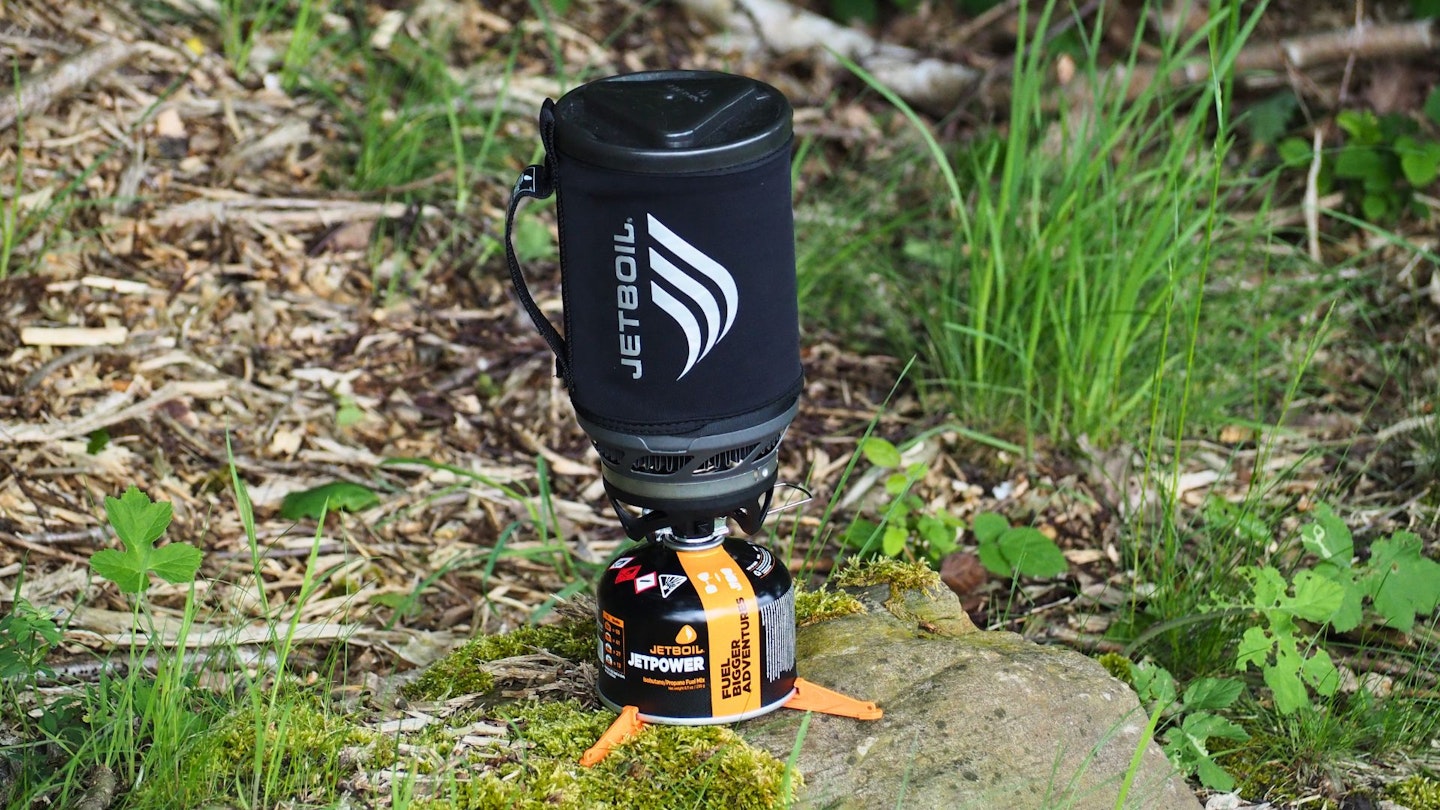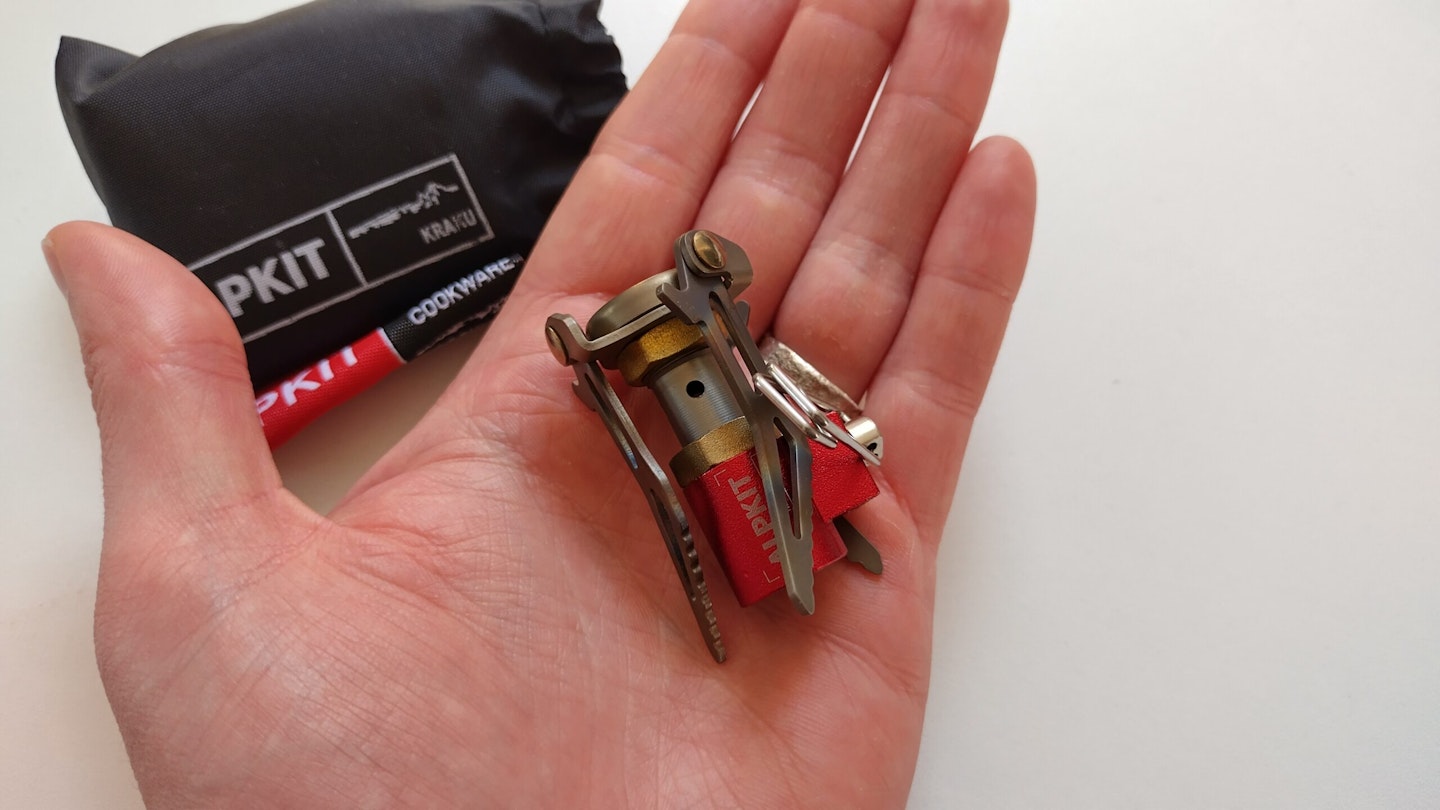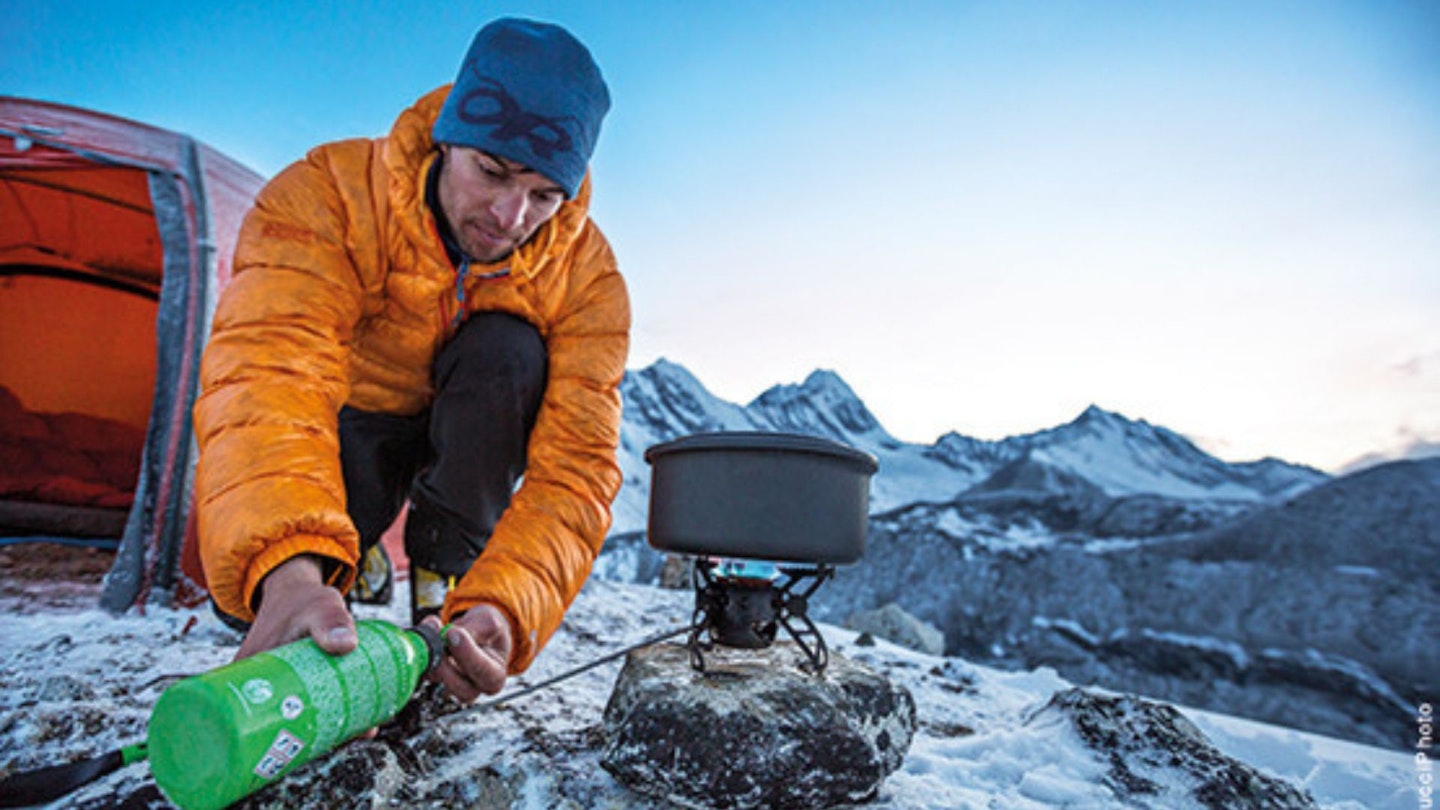The backpacking stove is a camping essential, even if you're going ultra-lightweight. There's just no fun in waking up and popping a caffeine pill instead of making a proper coffee, or being left with just cold-soaked food and bars at the end of a long day out.
No matter how light your pack needs to be, we think a hot meal and drinks are a luxury worth making space for and more than worth bringing a backpacking stove for even just a one-night trip. But how do you choose the best backpacking stove for you?
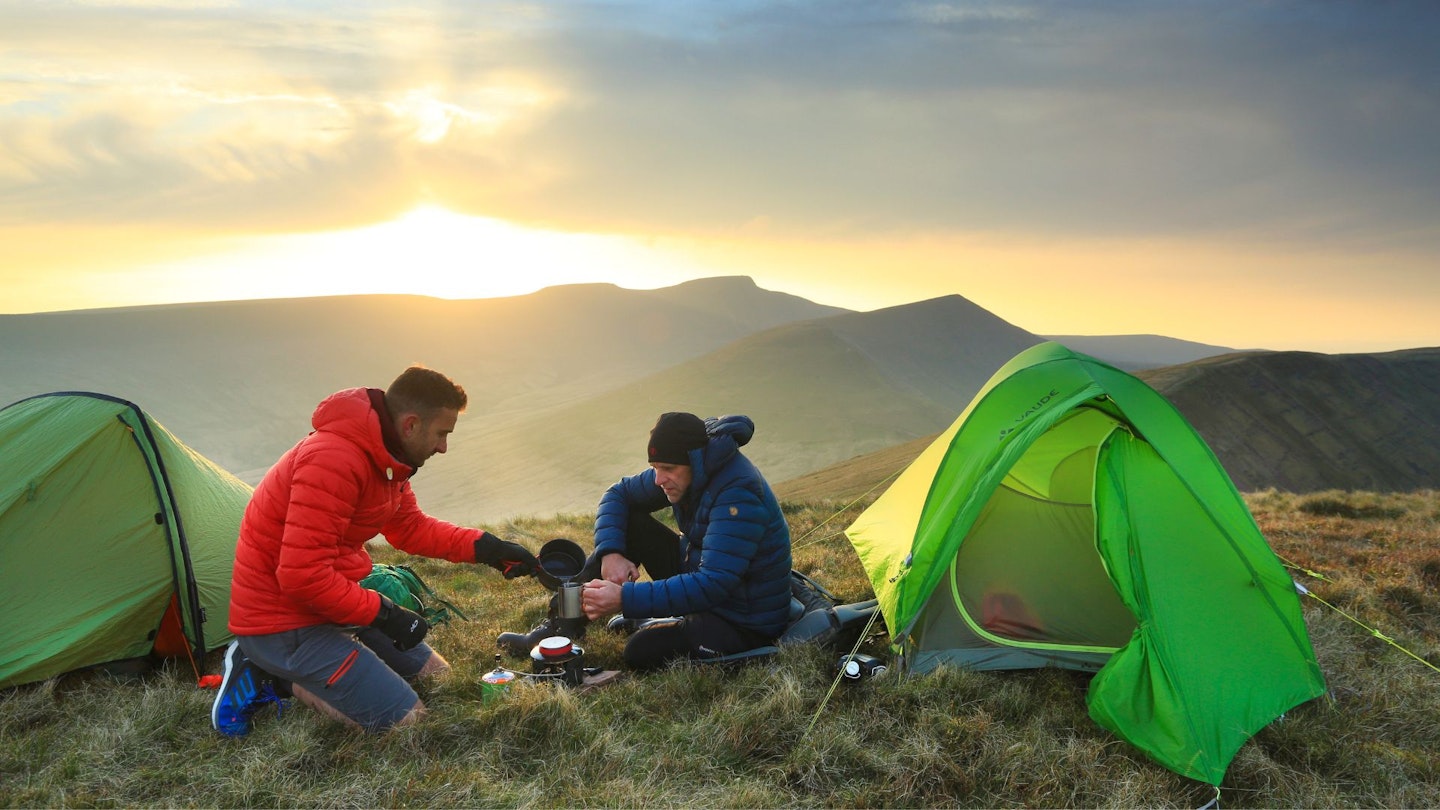
What are the best backpacking stoves of 2024?
Best in Test: SOTO Windmaster Stove
Best Value: Vango Atom Stove
Best multifuel stove: Optimus Polaris Optifuel
Backpacking stoves differ from camping stoves. The latest backpacking stoves are lightweight, compact and easy to use. Featuring a single burner head powered by a small gas canister, they typically fold down or pack away very efficiently to minimise weight and bulk. But you’ll want a stove that is robust and reliable, with no small parts that can be easily damaged.
Your next decision should be whether you want a stove that screws directly into the gas bottle or whether you want one with a hose and slightly more stability on rough ground. The advantage of a sit-on-top stove is that they're lighter than the hose-style ones; the disadvantage is that your dinner might occasionally fall over. Still slightly confused?
Here's our pick of the bunch, for all budgets and applications, plus an in-depth guide to buying.
How we test backpacking stoves
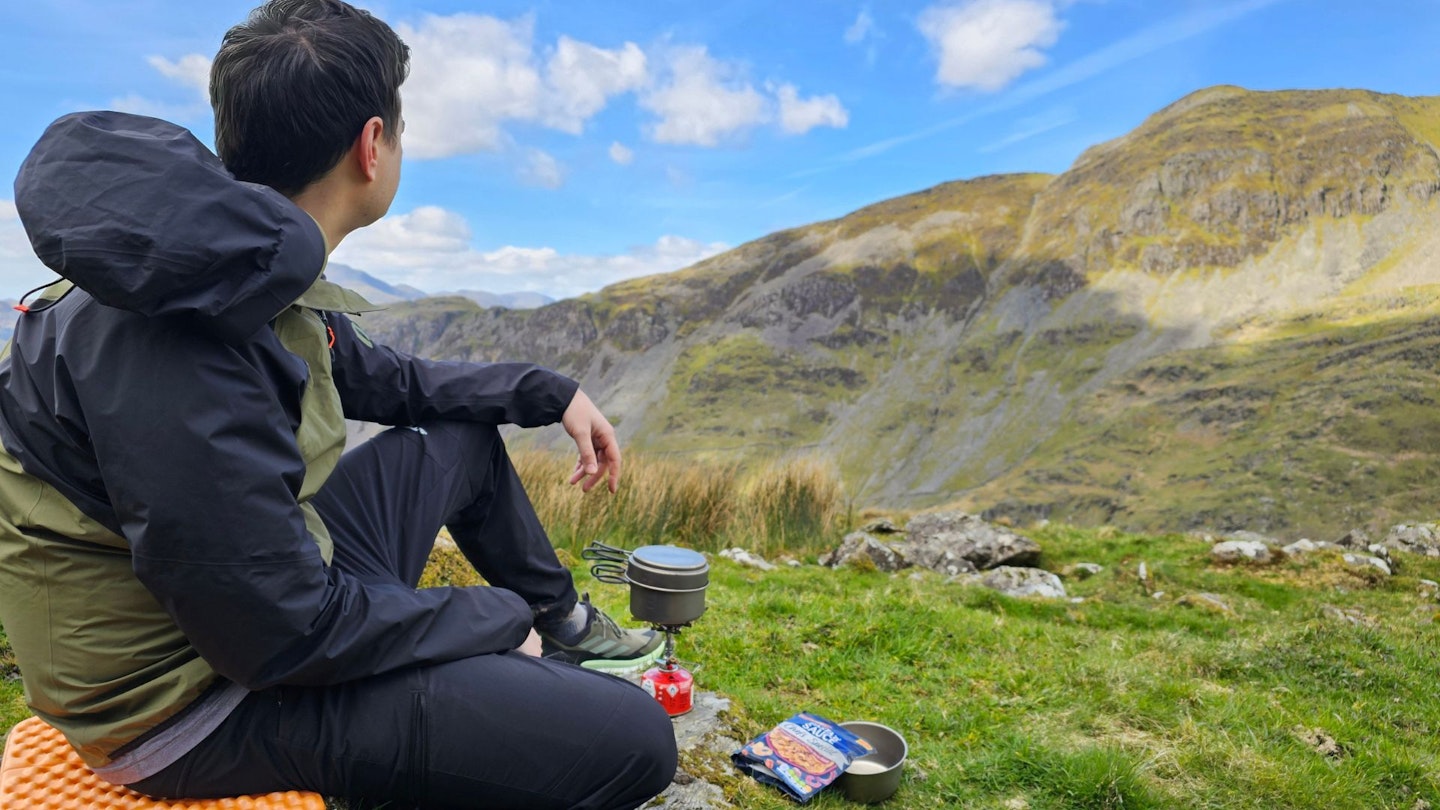
We secured test samples of each stove direct from brands or retailers and used them on wild camps in the hills and mountains of Eryri (Snowdonia) over a test period of several weeks.
As well as individual product testing, each stove was tested alongside the other backpacking stoves selected for our annual group test in a comparative boil test.
This test was conducted in real world conditions on a warm spring day in Snowdonia, measuring the time taken to boil 500ml of water at sea level in a 6mph wind, ambient temp 17°c, starting water temp 17.1°c. An 800ml hard anodised aluminium pot with a lid was used, with a standard 450g butane/propane mix gas canister as fuel.
The best camping stoves reviewed
In our comparative test of camping gas stoves (on a mild spring day as explained above), the SOTO WindMaster was the fastest screw-on type stove to reach boil at just 2min 30sec. We've used this stove a lot and have also achieved a fast boil time of 3min 50sec for 500ml on a January day of 2°C.
This was achieved thanks to the powerful 3260W (11,123 BTU/hr) output, wide 4.5cm burner diameter, and low profile of the support prongs keeping the pot close to the flame. Other features include piezo igniter, concave burner design with protective lip, four-pot support arms, control valve and micro regulator.
All that translates as being incredibly efficient, great at boiling water (and cooking other things) and you don't have to bring a lighter with you. In the competitive, crowded market of canister-top stoves, the Windmaster from Japanese brand SOTO stands out as being one of the best you can buy.
Read our full SOTO WindMaster Stove review
Pros
- Lightweight
- Excellent wind resistance
- Good fuel efficiency
- Fast boil times
Cons
- Not the most stable
| Weight: | 69g (with tri-flex pot support), 87g (with 4-flex pot support), plus 10g storage bag |
| Size (packed): | 9 x 5 cm |
| Boil time: | 2 minutes 30 seconds |
| Power output: | 3,260W (11,123 BTU/hr) |
As the name suggests, this is a very lightweight and compact stove weighing a mere 65g and fits comfortably inside a mug.
In the UK, Vango is a byword for good value camping gear, so the combination of compactness and value makes for an enticing prospect.
We liked the relatively large burner and supports on the Atom, which allow this stove to be quite stable and not be too bad in terms of hotspots when cooking. It doesn't have a regulator, however, so there isn't a guaranteed steady power output and can make it susceptible to a breeze.
It has plenty of power and boils within a respectable time (about four minutes), and overall build quality is decent too, especially considering the price.
Read our full Vango Atom Stove review
Pros
- Affordable
- Powerful
- Very light and compact
Cons
- Poor simmer control
- Lacks in-built ignition
- Susceptible to wind
| Weight | 65g (70g packed in storage bag) |
| Packed size | 6.5 x 4cm |
| Boil time | 4 minutes 2 seconds (0.5L of water at ambient 17°C) |
| Power output | 3,000W (10,236 BTU/hr) |
Lightweight and compact with a rapid boil time, there's little to dislike about the MSR Pocket Rocket Deluxe canister-top stove (3200W). It is feature-rich, with an in-built lighter, three fold-away support prongs, valve controller, wide burner head, excellent simmer control, and concave design with protective lip, which significantly improves performance in wind.
In many ways, the Pocket Rocket Deluxe is similar to the SOTO Windmaster. Both feature a regulator – a tiny internal component which controls how much fuel pressure is fed to the stove – and their weight, burner diameter, power output, boil times in our tests, and other vital stats are very similar.
The SOTO WindMaster has four support prongs compared to MSR's three, but the MSR ones feel stronger and sturdier, so there's minimal difference in all-round stability.
Read our full MSR PocketRocket Deluxe Stove review
Pros
- Lightweight
- Excellent wind resistance
- Good simmer control
- Fast boil times
Cons
- Temperamental ignition
- Not the most stable
- Relatively expensive
| Weight | 82g (100g packed in storage bag) |
| Size (packed) | 8.5 x 5.5cm |
| Boil time | 2 minutes 37 seconds |
| Power output | 3,200W (10,918 BTU/hr) |
The Optimus Vega is a remote canister stove, making it bulkier than screw-on models but it comes with several advantages. Its design keeps the gas canister away from the hot burner, enhancing safety and stability. The stove sits low to the ground, improving wind resistance, and the 17cm pot supports provide a stable cooking surface.
It's excellent for cold weather, as inverting the canister improves gas flow. The burner has a 1.4kW output, which is efficient but with slower boil times. Weighing 216g it's still not too heavy and packs away easily in its bag.
Despite lacking a piezo ignition, the Vega is practical and stable, with good simmer control and easy flame adjustment.
Read our full Optimus Vega review
Pros
- Wind resistance
- Simmer control
- Good fuel efficiency
- Good for winter camping
Cons
- Not the fastest boil times
- Expensive
- Heavier and bulkier than a screw-in stove
| Weight | 186g (216g packed in storage bag with ground shield) |
| Size | 14 x 10 x 6cm |
| Boil time | 4 minutes 36 seconds |
| Power output | 1,400W (4,777 BTU/hr) |
 LFTO
LFTOJetBoil is known for its personal cooking systems (PCS), which include integrated stoves like the Flash, Zip, and MiniMo. The MightyMo deviates from this design approach, returning to a classic screw-in, canister-top stove.
It features fold-out pot supports, a built-in regulator, and piezo ignition. The stove is designed for backpackers seeking a lightweight, compact option. Despite its simplicity, it offers high performance with a 3,000W burner and a quick boil time of 2 minutes and 49 seconds for half a liter of water.
We also found it has superb simmer control, which is often a weak point of little backpacking stoves.
However, like the Vango Atom, it struggles in windy conditions and is less stable compared to rivals. The MightyMo weighs 97g and packs compactly, but lacks the stability of other stoves when not using JetBoil's cookware.
Read our full Jetboil MightyMo review
Pros
- Fantastic simmer control
- Quick boil times
- Gas regulator ensures steady gas supply
Cons
- Not the most stable
- Susceptible to wind
| Weight | 97g (138g packed in storage bag) |
| Packed size | 7.5 x 6cm |
| Boil time | 2 minutes 49 seconds |
| Power output | 3,000W (10,236 BTU/hr) |
Of all the stoves on test, the Campingaz Twister Plus PZ was the best for user-friendliness. It's an affordable stove ideal for beginner backpackers. It features a robust build, simple design, and an easy-to-use piezo ignition system activated by a large red button. Setup involves folding out the triple pot supports and attaching the stove to a gas canister.
Unlike many stoves, it uses Campingaz CV canisters, which does narrow cartidge compatability to one type, but with the ‘Easy-Clic’ system, it makes attachment hassle-free. The canisters are self-sealing, allowing for easy removal and packing. The stove includes a sturdy plastic storage case, providing better protection than a bag.
The Twister Plus PZ delivers a powerful 2,900W output with good simmer control and a reliable ignition. Though bulkier and heavier than some competitors, we found it offers good stability and heat transfer. It boiled half a liter of water in 3min 28sec, outperforming several ultralight stoves.
However, its weight (269g packed) and size may not suit ultralight backpackers. Additionally, availability of compatible gas canisters may be an issue in remote areas.
Read our full Campingaz Twister Plus PZ review
Pros
- Easy to use
- Affordable
- In-built piezo ignition
Cons
- Not the lightest or most packable
- Requires Campingaz CV canisters
| Weight | 216g or 269g packed in storage bag |
| Size (packed) | 12 x 10 x 6.5 cm |
| Boil time* | 3 minutes 28 seconds |
| Power output | 2,900W (9,895 BTU/hr) |
If you want the efficiency of a PCS (personal cooking system) but with the ability to cook for more than one person, Jetboil's SuMo is the way to go.
The burner and pot are designed to work together, with Jetboil's signature FluxRing that increases surface area and therefore heat transfer to the pot. The FluxRing makes the SuMo an incredibly efficient stove and boils water in no time.
We like the control you get with the SuMo, which has a regulator you can fine-tune. And while the SuMo's performance is best with the 1.8-litre mug, there is a pot stand included as well so you can cook with other pots if required.
In fact, the SuMo comes with quite an arrray of useful features. These include a gas cannister stabiliser, ignitier, and the lid has both a strainer and pouring spout.
The whole system packs down into the 1.8-litre mug including with a 100g or 225g gas cannister. It's hardly the most compact arrangement though, measuring 22cm x 14cm.
Read our full Jetboil SuMo review
Pros
- Very fuel efficient
- Fast boiling and quick heating
- Gas cannister stabiliser included
- Pot stand included
- Excellent simmer control
Cons
- Ignitor didn't always work (although it did most of the time)
- Quite a pricey piece of kit
| Weight | 480g |
| Packed size | 22 x 14cm |
| Boil time | 4minutes 15 seconds (1L) |
| Power output | 1750W (6000 BTU/hr) |
So incredibly small and lightweight that you're in danger of losing it, the 45g Kraku is the ultimate minimalist stove. It screws directly to the top of the gas canister, where it throws off a powerful flame and then, when you're done, slots easily inside the Alpkit MytiMug (or equivalent) with the canister to make a complete, very simple cooking system. You could even carry it as a backup stove.
Is it worth it over the BRS-3000T? Somewhat predictably, the Kraku feels like a higher-quality stove that will likely live a longer life. And brand recognition provides food for thought too. Alpkit is a certified B Corp company with a number of other certifications to its name and good projects on the go. The other brand…? Well, who knows.
Pros
- Very light and compact
- Ideal for minimalist trips
Cons
- You can go even cheaper if you wish
| Weight: | 45g |
| Size (packed): | 3.7 x 5.2cm |
| Boil time: | 3 minutes 30 seconds |
| Power output: | 2600W |
There are occasions where being able to make use of alternative fuels is an advantage. Global travellers may find it easier to source petrol or diesel than a specific gas canister, and in cold climates, white gas or jet fuel may be more reliable than pressurised liquid gas.
The Optimus Polaris Optifuel stove can be used with all these fuels (this version is supplied with a fuel bottle), along with regular gas canisters and other options. And, unlike other multi-fuel stoves, there's no need for fiddly nozzle replacements before changing fuels.
Oh, the price? That's what you get for a stove which is quite literally bombproof, works in all altitudes, is ludicrously cheap to run, and will last a lifetime if used correctly. Just make sure to use it correctly - if you're buying your first ever backpacking stove, petrol ones are best to avoid as a beginner.
Pros
- Can use multiple fuel types
- Powerful output
- Indestructible
- No need to change nozzle with each fuel
Cons
- Relatively heavy and bulky
- Exepensive
| Weight: | 475g |
| Size (packed): | 14 x 8 x 6.5cm |
| Boil time: | 2 minutes 40 seconds |
| Power output: | 4200W |
What to look for in a camping stove
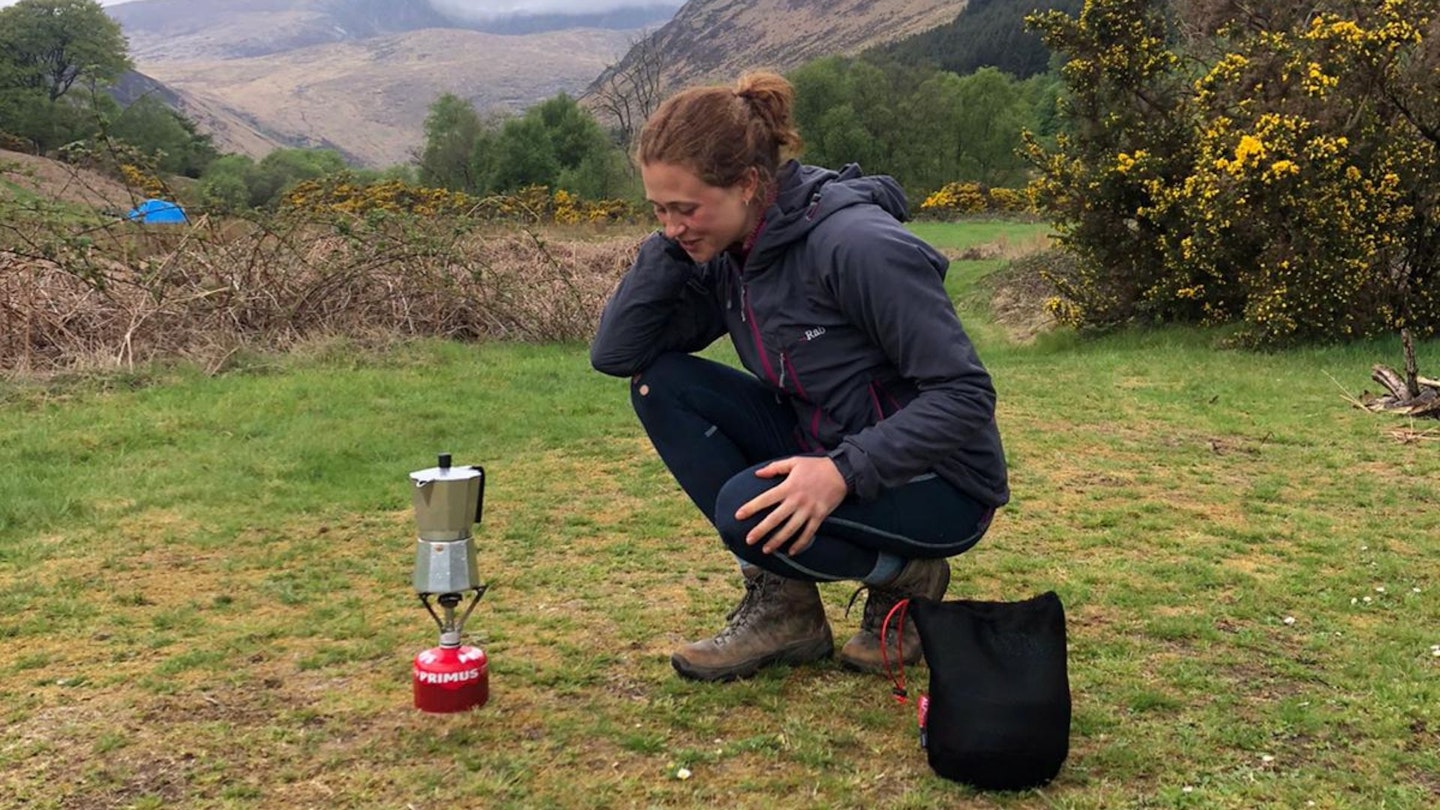
Choosing the right camping stove for you requires a little bit of research and know-how, but in general you'll need to look at size and weight (how heavy it is and whether it packs down small enough), plus things like fuel efficiency and availability, in addition to good ol' price.
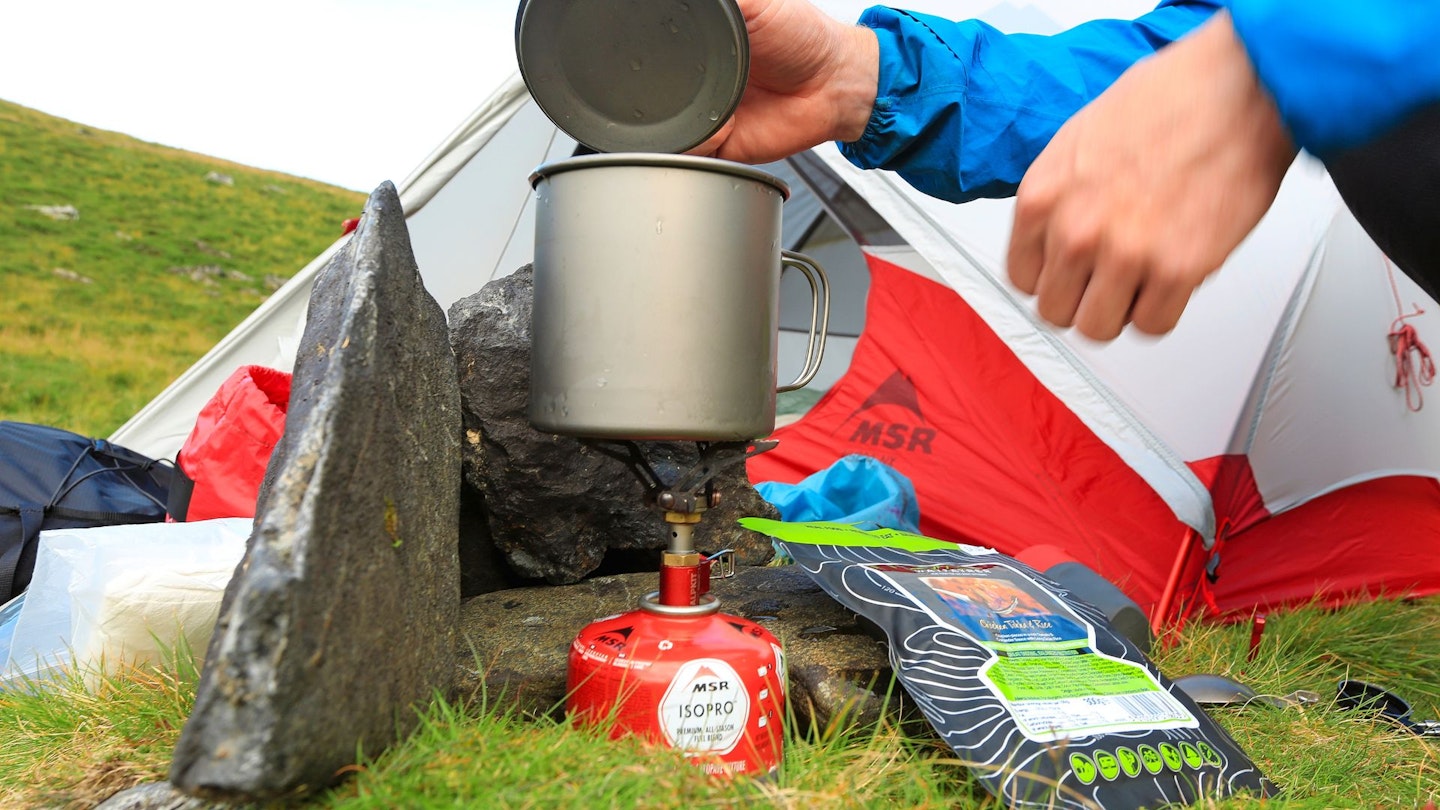
Size and weight
Match the stove to how you're packing. Going super lightweight? Take the smallest possible gas canister, a titanium mug and either the BRS-3000T or the Alpkit Kraku. Otherwise, something like the Jetboil Flash 2.0 offers super performance for a bit more bulk - but only for boiling water. If you're away for longer and need to cook larger meals on ore variable surfaces, the Primus Primetech or a Vango folding gas stove are both good bets.
If you're more likely to be hanging out at a campsite and won't need to pack a stove, consider choosing one of our best camping stoves. they're bigger, bulkier and more likely to produce properly nice home-cooked food: a blessing after a long day in the mountains.
Stability
If you're an avid trekker, you'll want a stove that is stable and still works well in windy conditions. Four, rather than three prongs aid stability for a screw-on stove, but the best option is when the burner is either mounted off the canister, or the burner is stabilised. These types of stove tend to be slightly heavier and bulkier but the moment all your dinner tips over onto the floor when using a canister mounted stove, you might be glad to have carried a little more in the way of weight.

Efficiency
Personal cooking systems (PCS) such as Jetboils have the best efficiency due to their integrated design. But they tend to be more bulky than the 'classic' stoves and aren't as versatile when it comes to cooking full meals, especially for a group. If you're only looking to boil water for coffee or freeze-dried meals, a PCS could be the way to go - but if you want to do thing like cook pasta, fry onions, or cook fish you've just caught, then a classic stove is a better bet.
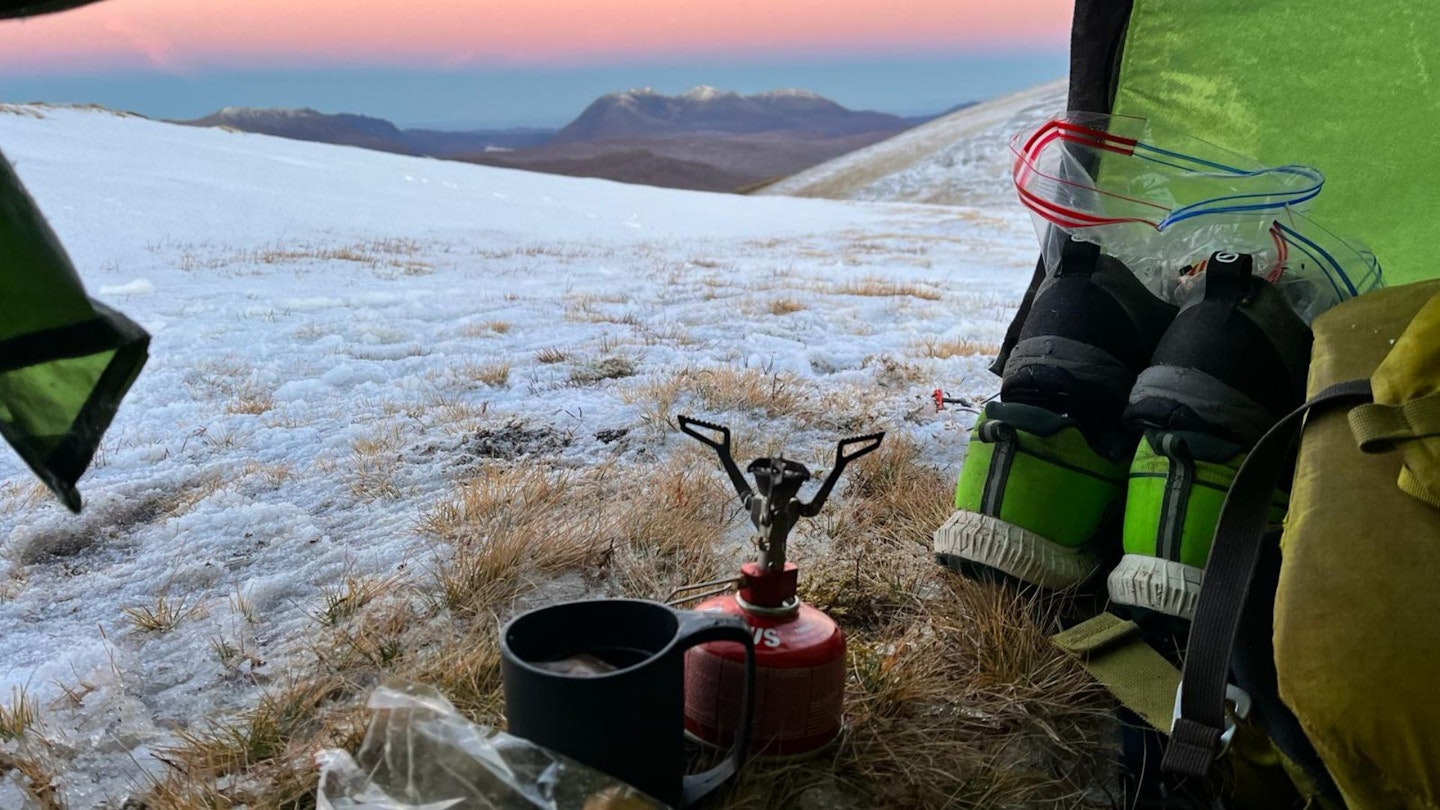
Price
There is an enormous range of prices for camping stoves. If the stove is only going to be used occasionally, stick with something simple, reliable and under £50. For keen hikers, you might find investing in something with better performance worth your while, especially if you're going to be using it at higher altitudes or in colder conditions.
Fuel
In most cases, standard butane/isobutane/propane gas canisters are suitable. But sometimes, sourcing petroleum or meth is easier in remote parts of the world. In these circumstances, alternative/multi-fuel stoves are a good option. Meths camping stoves tend to be pretty bombproof too, but do take longer to boil water and have less control for cooking.

Gas: butane or propane?
Butane and propane are both forms of LPG - liquid petroleum gas. Propane burns better at lower temperatures, but is more pressurised and often difficult to transport - you’ll see large, red pure propane bottles used outside for alpine huts, or as a fuel source for off-grid houses.
Butane is a much more common fuel for camping: anytime you see a blue bottle, that’s butane. Due to having a much higher boiling point than propane, it’s less pressurised, meaning it’s easier to transport and use without specialist regulators. It doesn’t burn quite as hot as propane and it doesn’t perform as well for colder trips, but for most people’s summer campsite experiences, butane will be the right choice.
However, some camping gas bottles - namely the smaller, more expensive ones you see for backpacking - have a mix of propane and butane.
Your reviewer

The reviewer was Matt Jones, one of Live For The Outdoors' and Trail magazine’s regular gear testers. Matt is a former magazine editor and an experienced wild camper, backpacker and long-distance walker. He’s completed numerous trails end to end in the UK, including the Pennine Way, the Cambrian Way, the West Highland Way and the Great Glen Way. He’s also hiked extensively in the US, Spain, Scandinavia and New Zealand.






